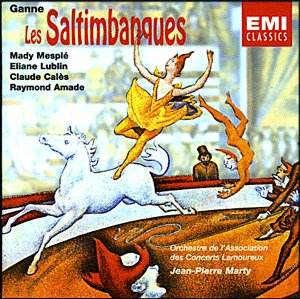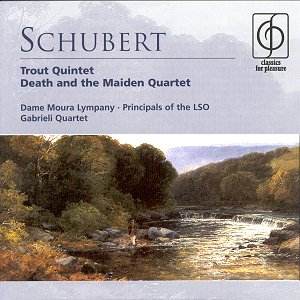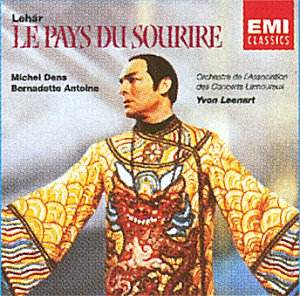 Composer: Louis Ganne
Composer: Louis Ganne
Works: Les Saltimbanques (The Acrobats) (1899)
Performers: Mady Mesplé (Susanne), Eliane Lublin (Marion), Raymond Amade (Paillasse), Claude Calès (André), Dominique Tirmont (Grand-Pingouin), Jean-Christophe Benoit (Malicorne), Jacques Pruvost (L’Aubergiste/Le Brigadier), André Batisse (Le Comte des Etiquettes)
Recording: Orchestre de l’Association des Concerts Lamoureux/Jean-Pierre Marty, Rec. Salle Wagram, Paris, July 1968
Label: EMI
Louis Ganne’s operetta Les Saltimbanques emerges as a captivating artifact from the fin-de-siècle Parisian theatrical scene, a period marked by a resurgence of operetta that sought to capture the public’s imagination amid the burgeoning arts and entertainment culture. Written in 1899 to a libretto by Maurice Ordonneau, this three-act work embodies the spirit of its time while reflecting Ganne’s unique compositional style, rooted in his academic lineage through César Franck and Jules Massenet. While Ganne’s works, including the popular military marches, often remain overshadowed by his contemporaries, Les Saltimbanques offers a delightful glimpse into the vibrant world of circus life intertwined with romantic intrigue.
The recording presents a robust interpretation of Ganne’s score, characterized by its lively rhythms and colorful orchestration. Mady Mesplé’s portrayal of the titular character Susanne is particularly noteworthy. Her light soprano glimmers throughout the performance, conveying both the innocence and emotional depth of her character. The vocal clarity and rapid vibrato she exhibits in pieces such as “Pourquoi vous” (CD1 tk.4) and “La bergère Colinette” (CD1 tk.16) establish her as a focal point of the narrative. Eliane Lublin, as Marion, complements Mesplé’s performance with her pleasing timbre and robust acting, particularly evident in the duet “C’est l’amour” (CD1 tk.19), which has become a hallmark of the production.
Ganne’s orchestration, handled adeptly by Jean-Pierre Marty and the Orchestre de l’Association des Concerts Lamoureux, showcases a keen understanding of the operetta form. The military interludes and ensemble numbers are executed with precision, particularly in the buoyant Act 2 ballet (CD2 tk.13), which confirms the composer’s growing confidence and technical prowess as the work unfolds. The military song “Va, gentil Soidat” (CD2 tk.5) serves as a prime example of Ganne’s ability to blend character and context through music, providing a stirring moment that resonates with the audience. However, the pacing in Act 1 could have benefitted from a more dynamic thematic progression, as certain sections tend to meander without the necessary dramatic impetus.
The sound quality of this mid-price reissue remains commendable, with the master tape transfer preserving the clarity of the orchestral textures and vocal lines. While some discrepancies in track indexing do appear, they do little to detract from the overall enjoyment of the listening experience. The engineering captures the resonance of the Salle Wagram beautifully, allowing the listener to appreciate the spatial dynamics of the orchestration.
Les Saltimbanques stands as a testament to Ganne’s ability to weave narrative and music into a coherent and engaging operetta. While it may not have the same recognition as the works of Offenbach or Audran, this recording serves as an invaluable resource for understanding the development of French operetta at the turn of the 20th century. The compelling performances, particularly from Mesplé and Lublin, alongside a thoughtfully executed orchestral accompaniment, affirm Ganne’s place within this rich tradition. The enchanting waltz “C’est l’amour” remains a highlight, a melodic jewel that lingers long after the final curtain. This reissue not only revives a forgotten work but also invites a new generation to appreciate the unique charm of Ganne’s musical legacy.



